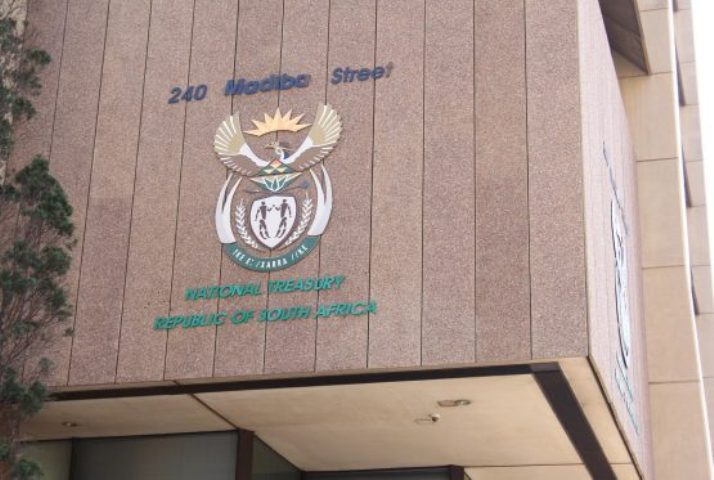Treasury releases R372 million for municipalities affected by floods
According to the Minister of Cooperative Governance and Traditional Affairs (CoGTA), Thembi Nkadimeng, these funds are earmarked to facilitate urgent repairs, reconstruction, and infrastructure rehabilitation.

- Country:
- South Africa
The National Treasury last month released R372 million from the Municipal Disaster Response Grant (MDRG) as an intervention for municipalities affected by floods in recent times.
This is after Treasury approved an allocation of R1.844 billion for the 2023/24 financial year to address the effects of disasters across multiple provinces.
South Africa has been hit by more heavy rain, leading to various floods in KwaZulu-Natal, the Eastern Cape, and the Western Cape since April 2022. This week rain caused havoc in the Western Cape with many schools across the province closed on Monday.
According to the Minister of Cooperative Governance and Traditional Affairs (CoGTA), Thembi Nkadimeng, these funds are earmarked to facilitate urgent repairs, reconstruction, and infrastructure rehabilitation.
“The focus is to ensure access to clean, reliable water and essential government facilities for affected communities,” she explained.
The Minister was addressing the media in Vryheid, KwaZulu-Natal, on Tuesday, where she released details of the funds disbursed to municipalities and provinces for disaster interventions.
Nkadimeng announced that 199 projects across various municipalities in seven provinces have already been approved, with a total allocation of R372 001 000.
These include 65 projects in KwaZulu-Natal, 36 in the Eastern Cape, 30 in the Western Cape, 29 in Free State, 19 in Mpumalanga, 18 in Limpopo, and two in the North West.
Nkadimeng assured South Africans that the allocation of disaster grants comes with stringent reporting and compliance measures to ensure transparency and accountability in the utilisation of funds.
“Organs of state are mandated to submit monthly, quarterly, and annual reports to the NDMC [National Disaster Management Centre], covering both financial and non-financial aspects of their disaster management initiatives.”
In addition, to oversee the implementation of projects and ensure adherence to quality standards, the NDMC, Provincial Disaster Management Centres (PDMC), Municipal Infrastructure Support Agency (MISA), and relevant sector departments conduct regular site visits to municipalities.
“Through these concerted efforts, we strive to ensure that projects are completed efficiently and that affected communities receive the necessary support to recover and thrive.”
Warning systems
Meanwhile, she said government is continuously improving early warning systems in collaboration with the South African Weather Service and other stakeholders.
“Furthermore, we are dedicated to having greater transparency, accountability, and engagement with our communities.”
The Minister said through concerted efforts and collaborative initiatives, her department is determined to build a more resilient and responsive disaster management framework that prioritises the needs and concerns of communities and empowers them to weather the storms that may lie ahead.
“I also want to take this opportunity to urge our people to heed the weather-related early warnings provided by disaster personnel and take the necessary preventative action even if it means just staying indoors or away from raging rivers.
“Early warnings are a vital component of disaster preparedness and can save lives by providing crucial information and allowing individuals to take proactive measures to mitigate risks and minimise harm.”
Impact
According to the Minister, the impact of disaster in South Africa is far-reaching.
“It is important that we acknowledge the gravity of the situation we have faced since 2018 as a result of national disasters such as drought and COVID-19.”
She also described the 2022 KwaZulu-Natal floods as one of the most significant natural disasters in the history of the country.
“These disasters have not only left a trail of destruction in their wake but have also broken family structures, disrupted communities, endangered livelihoods and put a lot of strain on our existing infrastructure.”
Meanwhile, she said the aftermath serves as a reminder of the challenges in the collective pursuit of improving disaster preparedness, response, recovery and moving towards a more resilient state.
“Working through the NDMC, we have managed to allocate funds through the grants to disaster-stricken areas, thereby playing a crucial role in facilitating the recovery and rebuilding process. These funds are not merely financial assistance, but rather they represent hope, resilience, and the promise of a better tomorrow.”
While government strives to accelerate response and recovery efforts in the aftermath of disasters, she acknowledged the frustrations that communities often endure.
“We understand the immense challenges and hardships that accompany such trying times, and we empathise with the uncertainties and anxieties that our fellow South Africans may experience.
“We wish to reassure all South Africans that we are committed to enhancing our systems and processes for disaster response. We recognise the critical importance of continuously improving our capabilities and mechanisms to better serve and support our communities during times of crisis.”
(With Inputs from South African Government Press Release)










